Its success heralded 1997’s Allegheny 2-6-6-6, 1998’s Big Boy 4-8-8-4, and 1999’s 4-8-8-2 Cab-Forward steamers. Simply put, these were notable models that gave O-31 operators the chance to run big power at a moderate price.
A lot has happened since then. Lionel and K-Line have produced articulated steamers for O-31 track, and as the manufacturers jockey for market share, the levels of exterior detail has gone up and prices have come down. And need I even mention the electronics revolution that has transpired?
We’re glad to see the second product out of MTH’s new South Korean locomotive factory is a re-issue of the RailKing Big Boy 4-8-8-4, now with ProtoSound 2.0 circuitry inside. So how does a late 1990s model stack up in appearance to 2003’s über steamers? Not bad at all.
The model
Someone recently asked me whether I tested a high-dollar Lionel or MTH Premier line locomotive differently from a more moderately priced steamer like a LionMaster Challenger, K-Line Big Boy, or RailKing Big Boy. The answer is “not at all.” Whether the product is designed for O-31 curves or O-120 curves, it all boils down to appearance, performance, and value.
We recently tested the K-Line Big Boy and the LionMaster Challenger, so both were fresh in our minds as we looked over the new RailKing die-cast metal Big Boy.
The model’s pilot has the clear look of a Big Boy, with its distinctive pilot, hinged access hatches, Union Pacific shield, and headlight. Deck details include rivets and grab irons, but if the light catches it right you can see two circles that appear to be mold markings.
The smokebox casting is crisp, but it begs for an add-on handrail instead of its cast-in version. The marker lights are a step above the egg-shaped, cast-in style found on many O gauge engines, but they fall short of the add-on lamps that you expect to find on a $700 locomotive.
The boiler casting is smooth and free of any defects. I’d rate it as nice looking as any of the RailKing steamers I’ve examined over the years. There are plenty of cast-in details like rivets, seams, bands, and hinges. Of special note are the dozens and dozens of rivets cast into the sides of the firebox.
Add-ons include handrails that run down the sides of the boiler, a bell, a whistle, grab irons on the cab sides, and pop-off valves in the middle of the boiler.
The cab has an attractive backhead. A red bulb provides a firebox glow. The two figures are worth mentioning. Instead of just sitting there, the engineer is reaching out, perhaps for the whistle cord, and the fireman (with his head turned slightly) is using his hand, perhaps to emphasize some point in a discussion. Not bad at all!
I’ve saved measurements for last simply because there is no pretense that this is a full O-scale model. The RailKing Big Boy, from its pilot to the rear of its tender excluding the coupler, is 27.5 inches long or 110 feet in O scale (80 scale feet for the locomotive, 34 scale feet for the tender). The real Big Boy is 124 feet long (85 feet for locomotive, 39 feet for the tender). The model’s drivers are 60 scale inches in diameter compared to the prototype’s 68-inch drivers.
Our sample Big Boy sat on my desk for several days. After scanning the product countless times, I found a few spots where a bit too much paint had been applied, blurring some of the casting detail. But otherwise the gray, black, and silver paint application looked just fine.
On the test track
This hunka-hunka-burnin’ train had solid performance numbers on the test track. Our low-end speed average with ProtoSound 2.0 speed control was 4.38 scale mph while the high-end average was 74.6 scale mph. The drawbar pull for this monster was a stump-pulling 3 pounds, 4 ounces.
ProtoSound 2.0-equipped locomotives operating in command-control mode using MTH’s Digital Command System continue to impress me. I categorize these features as “must use,” such as the rail clickety-clack sounds and odometer, to “whimsical,” such as the train-wreck noises.
The feature I like best – and which rules the roost as far as I’m concerned – is the incredibly solid cruise control. Bring the locomotive up to the speed you want, let go, and the system takes care of any variations due to curves or grades.
There seems to be a general movement afoot in the industry to reduce the number of center-rail pickup rollers on trains, and the Big Boy is no exception. You’ll find just two pickup rollers on the locomotive, spaced nearly 10 inches apart, and none on the tender.
The tender-based sound system is powered through the tether from the locomotive. The ProtoSound 2.0 volume control knob is on the tender, as is the smoke on/off switch.
I was a little disappointed by the Big Boy’s sound reproduction. All previous ProtoSound 2.0 gear I’ve heard was substantially better than their original ProtoSound predecessors. But the Big Boy’s sound reproduction on this model is just “okay.”
To me it lacks the range and gusto of other ProtoSound 2.0 power, but others on the CTT staff disagreed with me.
On O-31 and O-42 curves, the Big Boy shows lots of cab overhang.
On one CTT home layout, the rear edge of the cab even touched trackside catenary poles on a curve that, until now, had never caused a problem. Esthetically, the locomotive and tender are far more pleasing rounding wider curves.
The RailKing Big Boy has a good balance of detail and performance – especially with its ProtoSound 2.0 features – that allows operators with moderate-sized layouts and train budget caps to get some big-time steam power on the track.





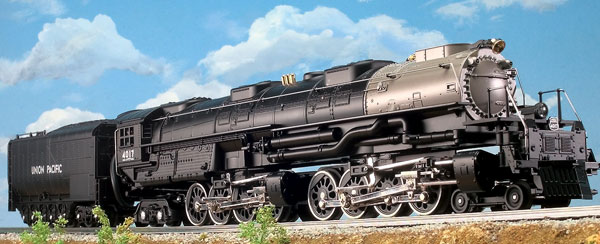

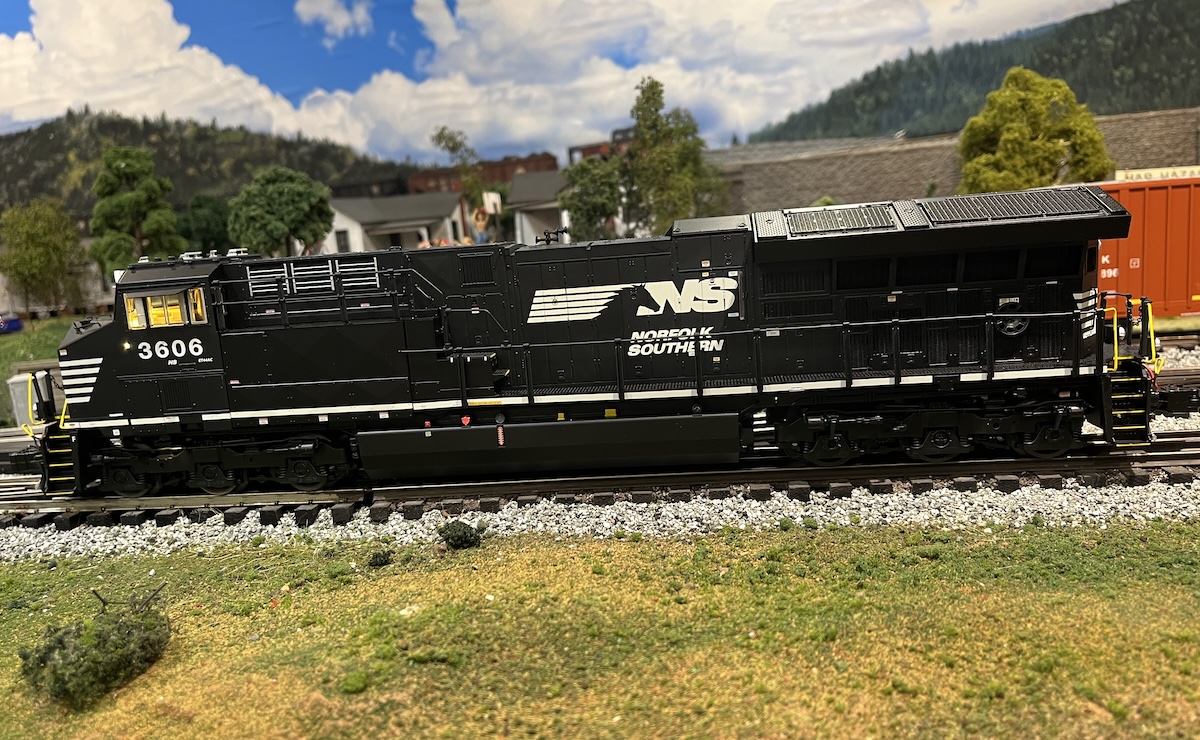
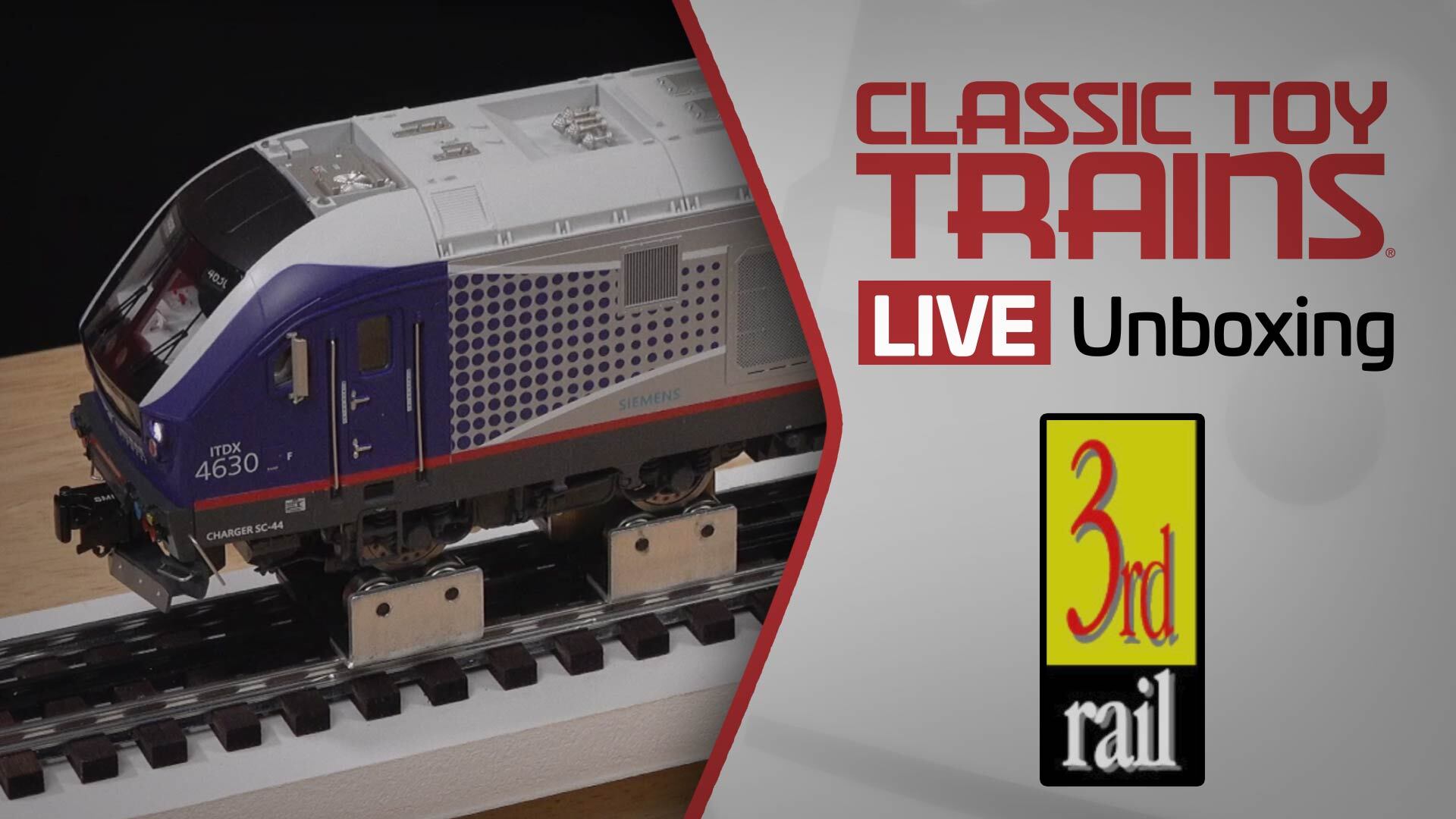
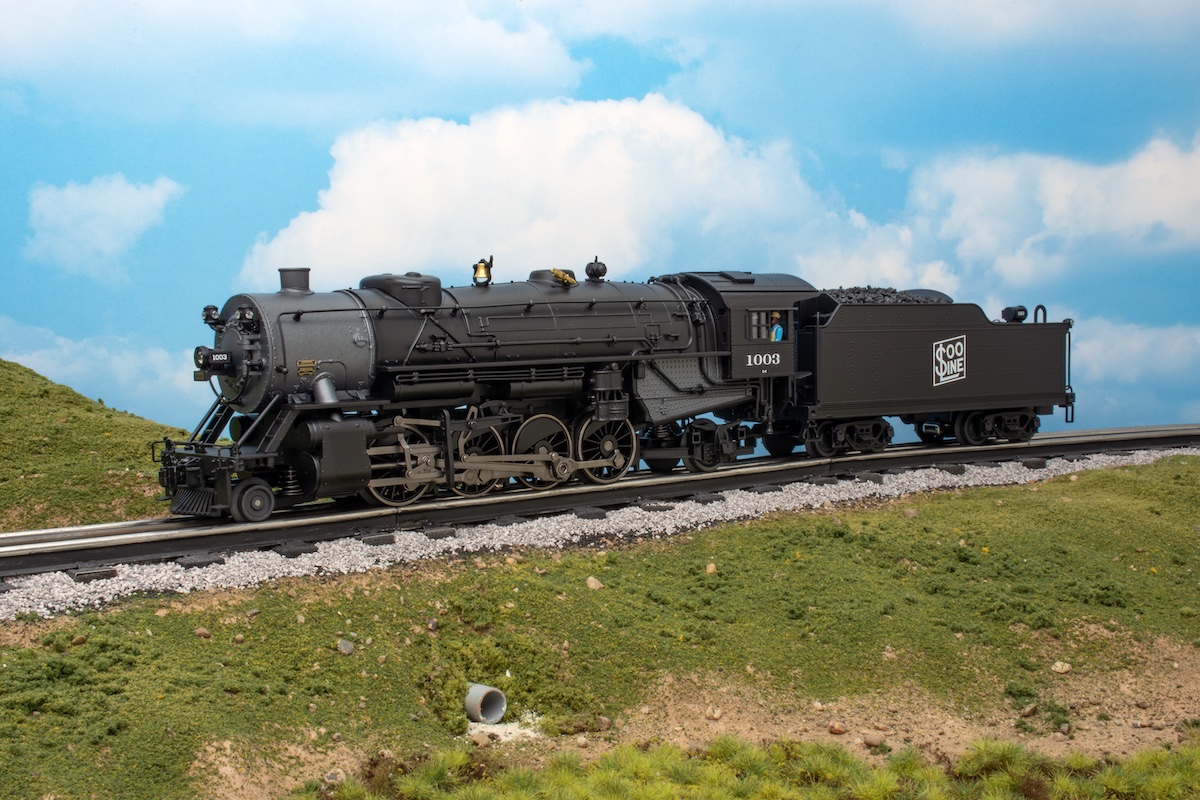
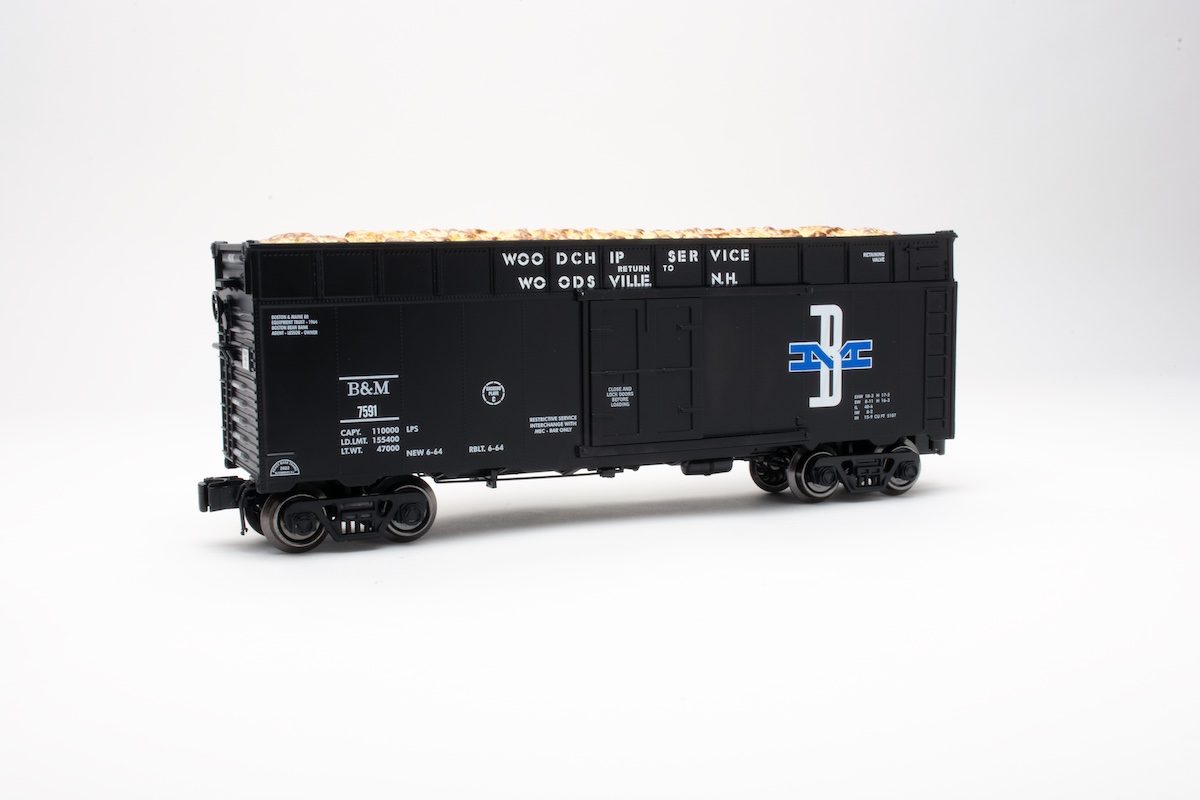




What can I say, its a Big Boy! I just got the frieght set and would sleep with this engine if I could. It runs my 54 inch curves right into my 36 inch curves without so much as a hickup. Very impressive. Very pretty in appearence also and has became my favorite steam giant. Im going to the hobby store and order the MTH J-class.
I am building a basement layout, and would like to get the full scale for 072" radius, I am trying to model modern day, where a Dash 9 with a mile of coal cars sets outback on the siding of the plant where I work for up to a day, while the container trains come by, so I would like to get the most realistic 4-8-8-4 going, I am laying out my main line to accommodate that engine, I have got a bunch of hoppers from the 40's, so this would make the new guys set on the sidings. Thanks Guys Neat !!
I just purchased one and am quite pleased with it. It runs well on 054 radius, but even on these curves there is significant overhang of the rear cab. The whistle is great, but not very loud, even with the volume set all the way up. Smoke output is impressive, I ran it last night for a few hours and my train room still smells like smoke this evening.
Low speed running is a little twitchy (even in DCS), but I expect the running gear to loosen up as it breaks in. Some of the PFA voices are the same as other MTH Santa Fe and UP models, but the dialog is interesting and certainly easy to understand. I wanted to double head the train with an MTH UP 0-6-0 switcher, but there is no front coupler.
Overall, the model is a winner and is definately impressive rolling down the track. I would have preferred a Lionel model with TMCC Legacy, RS 5.0 and Fatboy speakers, but I'll have to wait at least a year for something similar in the Lionmaster line. However, this fills the bill for a mid priced but impressively large steamer to run on my 054/042 layout.
Excellent workmanship and the detail. I have enjoyed operating this engine. It works great around my 054 switches and 045 curves. Great product